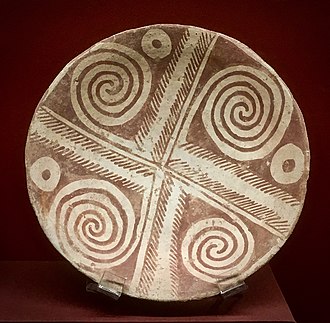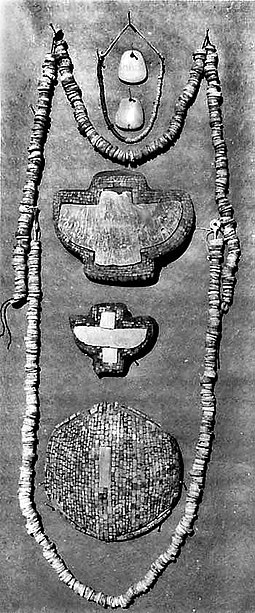advertisement
1 May 2023
Arizona is home to the largest American Indian population currently in the United States. The history of native peoples in Arizona is vast, complex, and likely much of it is lost to history. Today’s spotlight is on the Hohokam culture, a pre-Columbian Native American civilization that inhabited parts of modern-day Arizona, United States. They were known for their advanced agricultural techniques, innovative architecture, and complex social organization.
The Hohokam civilization emerged around 200 B.C. and lasted until approximately 1450 A.D. Their civilization was centered around the Salt and Gila Rivers in present-day Arizona, and their territory extended from modern-day Phoenix to the Mexican border. They lived in settlements ranging from small villages to large cities, with the largest city being present-day Phoenix.
 One of the most notable characteristics of the Hohokam civilization was their sophisticated agricultural practices. They developed an extensive canal system that allowed them to irrigate crops and grow a variety of plants, including corn, beans, squash, and cotton. The Hohokam were able to sustain their population growth through these agricultural practices, which allowed them to thrive in the arid environment of the American Southwest.
One of the most notable characteristics of the Hohokam civilization was their sophisticated agricultural practices. They developed an extensive canal system that allowed them to irrigate crops and grow a variety of plants, including corn, beans, squash, and cotton. The Hohokam were able to sustain their population growth through these agricultural practices, which allowed them to thrive in the arid environment of the American Southwest.
The Hohokam were also skilled artisans known for their distinctive pottery and shell jewelry. They traded their goods with other tribes across the Southwest, and their influence can be seen in the art and culture of neighboring Native American communities.
The Hohokam were also innovative architects, constructing multi-story buildings using adobe and stone. They created ball courts for playing a game similar to modern-day basketball and also built platforms for public ceremonies and religious rituals. The Hohokam were known for their elaborate burial practices and often buried their dead in shaft tombs or cremated them.
 The decline of the Hohokam civilization is still a matter of debate among scholars. Some argue that environmental factors, such as drought and soil depletion, contributed to their decline. Others suggest that internal conflict and warfare, as well as external pressures from neighboring tribes, led to the collapse of the civilization.
The decline of the Hohokam civilization is still a matter of debate among scholars. Some argue that environmental factors, such as drought and soil depletion, contributed to their decline. Others suggest that internal conflict and warfare, as well as external pressures from neighboring tribes, led to the collapse of the civilization.
Today, the legacy of the Hohokam civilization can still be seen in the archaeological ruins that dot the landscape of Arizona. Visitors to the region can explore the remnants of their ball courts, irrigation canals, and multi-story buildings. The Hohokam also left a wealth of artwork and artifacts on display in museums across the Southwest.
The Hohokam civilization is an important reminder of the rich cultural heritage of Native American communities in the United States. Their agriculture, architecture, and art innovations have had a lasting impact on the region, and their legacy continues to inspire contemporary artists and thinkers.
It is important to note that the Hohokam civilization was not an isolated entity but rather one of many distinct cultures that developed across the Americas. Understanding the history and culture of indigenous peoples is crucial for building a more equitable and just society and for recognizing the contributions of Native Americans to the development of the United States. By studying the Hohokam civilization, we can gain a greater appreciation for the diversity and complexity of human societies and learn valuable lessons about sustainability, innovation, and social organization.
advertisement
The saguaro cactus (Carnegiea gigantea) is one of the most iconic symbols of the American Southwest, and for good reason. These towering cacti are found primarily in the Sonoran Desert of Arizona, California, and Mexico, standing tall and proud with their arm-like branches reaching toward the sky. While most people are familiar with the saguaro cactus thanks to Western films and desert landscapes, there are several fascinating facts that many may not know about this unique plant. Here are some intriguing facts about saguaro cacti that may surprise you! advertisement 1. They Can Live Over 150 Years Saguaro cacti are
Arizona is a hiker’s paradise, whether you’re a seasoned adventurer or a casual weekend explorer, the state has a trail for every style, season, and skill level. Here are some of the best places to hike in Arizona. advertisement 1. Cathedral Rock – Sedona Difficulty: Moderate to strenuous Why It’s Amazing: This iconic red-rock formation offers one of Sedona’s most breathtaking climbs. The trail is steep, hands-on, and rewarding with unforgettable panoramic views. 2. Camelback Mountain – Phoenix Difficulty: Strenuous Why It’s Amazing: One of the most famous urban hikes in the country, Camelback delivers challenging scrambles, busy energy, and
When most people picture Arizona, they imagine cactus-filled deserts and blazing summer heat. But head north or climb in elevation, and a completely different side of the state appears: powdery snow, pine forests, cozy cabins, and ski runs with sweeping mountain views. Arizona’s snowy adventures offer a surprising winter escape for travelers who want chill instead of sizzle. advertisement Where to Find Snow in Arizona Snow in Arizona is all about elevation. The higher the climb, the better the chance of a winter wonderland. Northern and eastern Arizona are the prime regions for cold-weather fun, with pine-covered plateaus and mountain
Arizona, with its impressive diversity, surprises newcomers and constantly defies stereotypes. While many people picture endless deserts, triple-digit temperatures, and sunburn as far as the eye can see, the reality is far more varied. Here are the top 10 misconceptions about Arizona, and the truth behind them. advertisement 1. Arizona Is Just a Hot, Dry Desert Most people imagine the entire state melting under 115°F heat. And while parts of Arizona (like Phoenix and Yuma) are famously sizzling, the state also has snow-covered mountains, forests, alpine lakes, and ski resorts. Flagstaff, for example, sits at around 7,000 feet in altitude
advertisement
| Cookie | Duration | Description |
|---|---|---|
| cookielawinfo-checkbox-analytics | 11 months | This cookie is set by GDPR Cookie Consent plugin. The cookie is used to store the user consent for the cookies in the category "Analytics". |
| cookielawinfo-checkbox-functional | 11 months | The cookie is set by GDPR cookie consent to record the user consent for the cookies in the category "Functional". |
| cookielawinfo-checkbox-necessary | 11 months | This cookie is set by GDPR Cookie Consent plugin. The cookies is used to store the user consent for the cookies in the category "Necessary". |
| cookielawinfo-checkbox-others | 11 months | This cookie is set by GDPR Cookie Consent plugin. The cookie is used to store the user consent for the cookies in the category "Other. |
| cookielawinfo-checkbox-performance | 11 months | This cookie is set by GDPR Cookie Consent plugin. The cookie is used to store the user consent for the cookies in the category "Performance". |
| viewed_cookie_policy | 11 months | The cookie is set by the GDPR Cookie Consent plugin and is used to store whether or not user has consented to the use of cookies. It does not store any personal data. |
